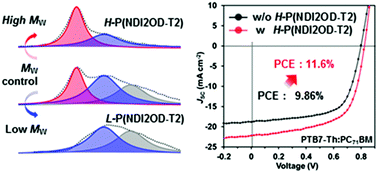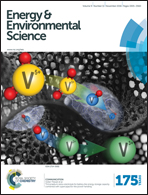The use of an n-type macromolecular additive as a simple yet effective tool for improving and stabilizing the performance of organic solar cells†
Abstract
The discovery of an easy and powerful way to further improve and stabilize the performance of organic solar cells (OSCs) from the current levels would advance their commercialization. In this work, an unprecedented power conversion efficiency (PCE) of 11.6% with improved stability is demonstrated by using a high-quality n-type macromolecular additive P(NDI2OD-T2) via a simple route without additional processing steps, where the high-quality P(NDI2OD-T2) is isolated by a THF-soaking treatment. We attribute the improved performance to advantageous changes in the morphology of the photoactive materials induced by the macromolecular additive. In addition, using the ITO-free architecture on a flexible PET substrate, we obtain an impressive PCE of 5.66% in macromolecular additive-processed devices. Due to its great applicability and easy accessibility, the use of the macromolecular additive introduced in this study has great potential for broad applications with other OSC systems, which will accelerate the commercial viability of photovoltaic technology.


 Please wait while we load your content...
Please wait while we load your content...